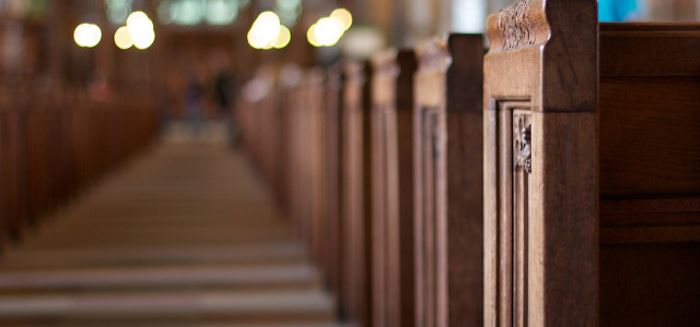When I was newly ordained, I had an unexpected opportunity to preach at a large youth conference. As part of my preparation for the event I asked a mentor — a frequent speaker and marvelous preacher himself — for advice. He said, whenever he speaks at a youth conference, he picks out a particular youth sitting in the back row or two. As he speaks, he has that young person in mind. For my mentor, this particularity is really important. “You’re not speaking to the group,” he said, “you’re speaking to that one, and that one, and that one.”
I recalled this bit of advice when reading today’s post by Erin Weber-Johnson. She explains how stewardship ministries thrive when we appreciate the particular contexts, experiences, and realities of who we are inviting to give.
Yours truly,
Adam Copeland, Center for Stewardship Leaders
Who is Giving? Part 1
by Erin Weber-Johnson
I was once asked to consult at a large Manhattan church for their annual campaign. Part of that work involved bringing groups together to have conversations that explored our own narratives around finance and money. One of the cohorts in the church, a group of 20 or more Millennials, all reflected on the stock market crash of 2008 as a formative experience that has deeply impacted their understanding of personal finance, their practices around money in the world, and their charitable giving. The group of young adults shared stories of how this experience injected a sense of instability, fear, and beliefs about scarcity and the resources available to them in the world.
Through this experience of listening, we came to realize that we bring not just our finances, but our brokenness, experiences, and our fears — our whole selves — to the act of giving. It was in this process of inviting each other’s stories that we were able to later invite individuals to give in a way that was restorative. We weren’t just asking for their money; we had heard their story and, by doing so, they became part of our story as well.
I propose that when we give our gift to God through the church, both the act of inviting and of giving, force us to confront our own relationship with money. This will potentially engage our sense of shame, guilt, and frustration.
Yet, there is good news, my friends. For I don’t believe we have to be trapped in this shame. Rather, in the act of inviting others’ gifts, and giving ourselves, we are given an opportunity to claim liberation.
The act of giving can draw us to a savior who heals us, and through our gift we participate in the liberation of others – we participate in the healing of the world.
If this true, if giving and inviting others to give can result in real, transformative, and life-changing liberation, then we must pay attention to the real-world contexts into which we issue our invitation and out of which we give our gifts. Stewardship happens at the intersection of culture, community, and the lived experience of each child of God. All these factors impact how we communicate, how we invite others to give, and how we show gratitude.
Last year my son and I contracted strep throat. At the doctor’s office, we were told that they would need to do a strep test. Have you ever had one? The q-tip is swiped way in the back, often causing one to gag. I wasn’t really excited at the idea of my five-year-old having his first one.
The doctor, however, worked some kind of magic. She took into account my son’s age, his experience with doctors, his personality. Applying this information, she went slowly and patiently providing lots of distractions and voices. My son finished the test unfazed and clearly bonded with the doctor. For me, the doctor took into account my age, my clear desire to get this over with, and other relevant factors. The test was administered quickly and without voices or narrative. I was grateful.
So too, when we enter a room for a pastoral care situation we take into account a person’s relationship with the church, their age, their relationship to the pastor, any special needs or vulnerabilities that might require others to be in the room during the visit. Context is everything. Without attending to each person’s individual context, in medicine, pastoral care, spiritual guidance, and, yes, stewardship, we cannot move together toward growth, transformation, and healing.
In the Jewish tradition there is a theology of charitable giving, tikkum olam, in which God gives us the ministry to repair or fix the world. In my tradition in the Episcopal Church, through the baptismal covenant, we commit our lives to reconciling ourselves to God and to one another.
I believe tikkum olam, baptismal living, can happen when we treat stewardship and fundraising as ministry. Lives are transformed in giving to repair a broken world, and in this process, we find ourselves reconciled to God.
How does this happen? It begins with the act of learning who are in your pews. One size will not fit all. Stewardship, as a contextual ministry, then requires an attentiveness to what each person brings and how this ministry can adapt to meet the needs of those in our pews.
For More Information
Erin Weber-Johnson works with faith-based organizations in areas of fundraising/stewardship and strategic visioning as a consultant at Vandersall Collective. She is co-founder of the Collective Foundation, a nonprofit that seeks to address the gap in giving data for faith communities of color. Previously, she worked nine years the Episcopal Church Foundation as senior program director for strategic resources and client services. She lives in St. Paul, Minnesota.

